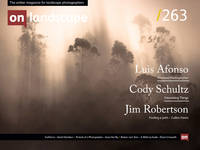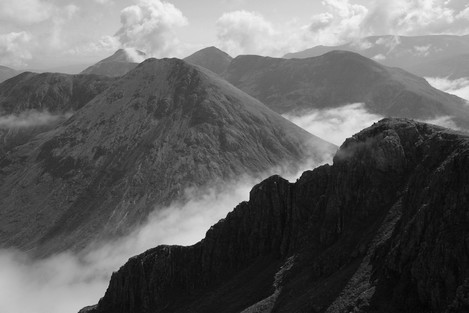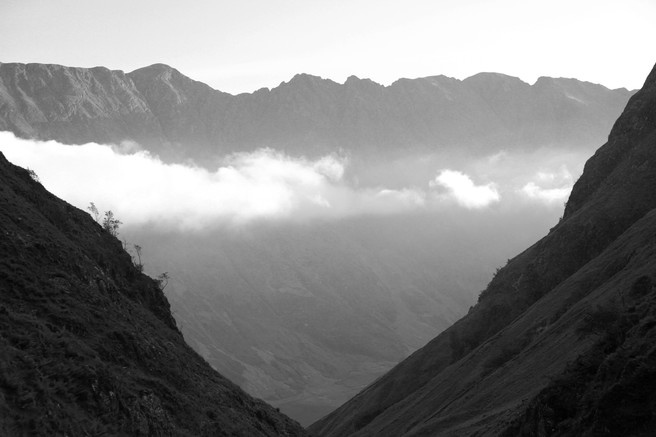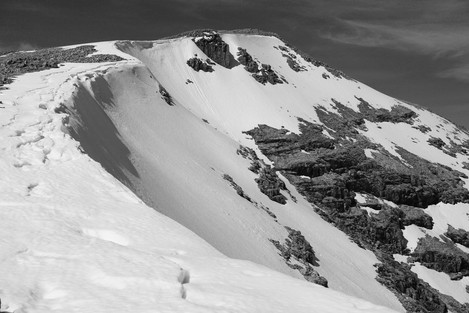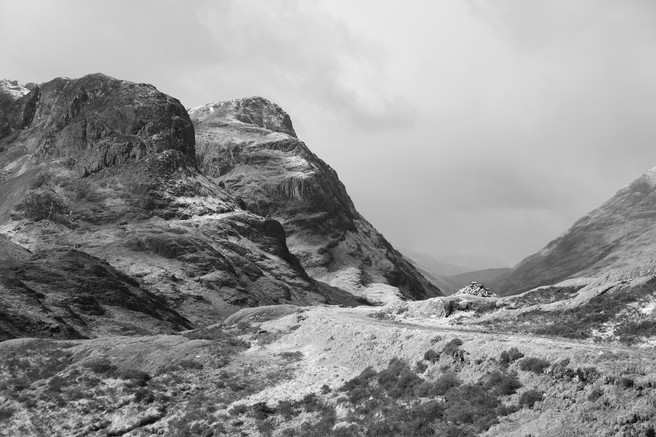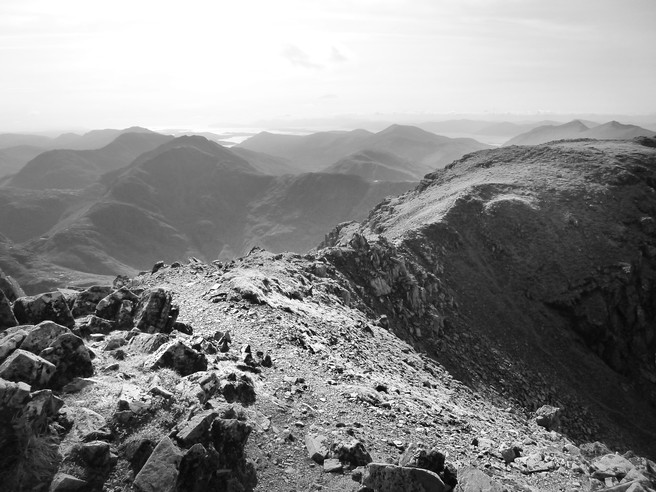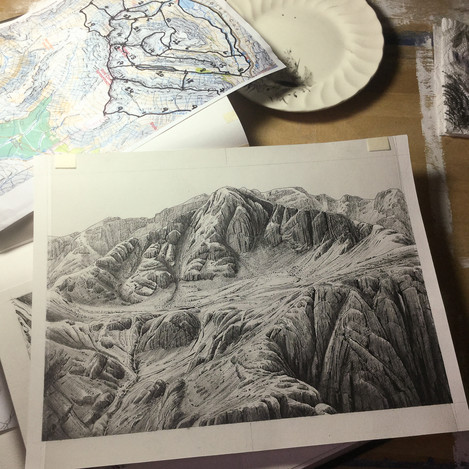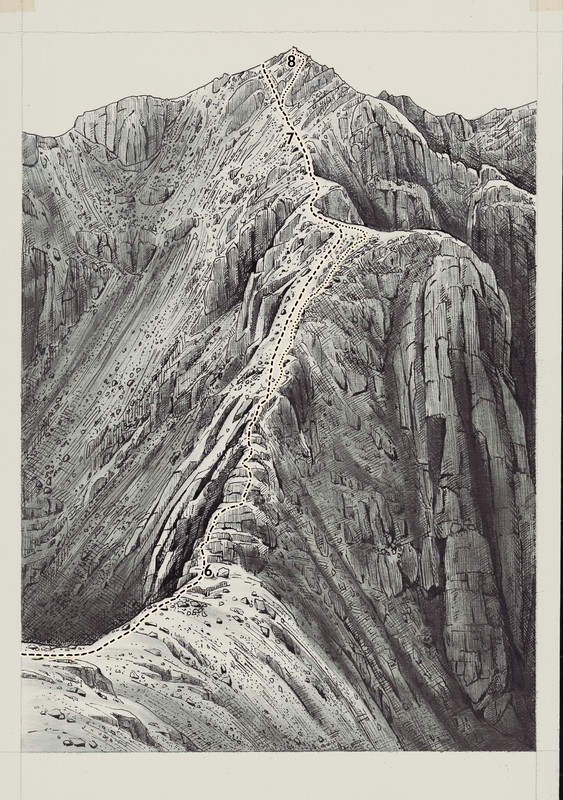31 walks around Glencoe’s finest mountain range

David Unsworth
Artist, illustrator, photographer and writer. After five years at art school, David has spent the last thirty years living and working amongst mountains, first in the English Lake District and now in the Scottish Highlands. Walking has always been a major part of his practice both for subject and inspiration. Rather than the grand vista, his work explores fragments of the landscape, seeking intimate and personal responses to the vastness of the mountain environment. Photography website.
Until one is committed, there is hesitancy, the chance to draw back, always ineffectiveness. Concerning all acts of initiative (and creation), there is one elementary truth the ignorance of which kills countless ideas and splendid plans: that the moment one definitely commits oneself, the providence moves too. A whole stream of events issues from the decision, raising in one's favour all manner of unforeseen incidents, meetings and material assistance, which no man could have dreamt would have come his way.~ W.H. Murray
A quote from Murray seems entirely appropriate to begin this story, a quote which epitomises that breaking of inertia when starting a new project. He was a mountaineer and writer to whom Glen Coe was the absolute pinnacle of climbing excellence. The memory of these mountains sustained him throughout his incarceration in a German prisoner of war camps during the second world war. His best selling book, 'Mountaineering in Scotland' was written on scraps of toilet paper over the three years of his imprisonment and remains to this day a powerful testimony to the memory of mountains. In a very real way, the recollection of climbing days spent in and around Glen Coe saved his life.
In Mountaineering in Scotland, W.H. Murray wrote about the view of Bidean nam Bian whilst on a winter night walk across the pinnacles of the Aonach Eagach ridge, "From this part of the ridge we were better able to see Bidean, to see it as a whole mountain - shaped by deep corries, thrusting its strong ridges outward to eight sparking peaks, down-curving to lesser tops, emerging from the lowly blackness of Glencoe to a crescendo of light at the summit. That was the Bidean nam Bian of our physical world, by its mere presence there calling our hearts to the world inhabited by beauty." New generations of mountaineers and hill walkers now follow in his footsteps along the high ridges and through the profound hollows of this mountain realm, creating their own individual memories of days lived to the full in this unique landscape.
It is the most fascinating and complex of all the mountains of Glen Coe that our guide book reveals: Bidean nam Bian. This is the story of how and why we produced a walking guide book to this great mountain of Glen Coe, from its conception to its final publication.
Writing a walking guidebook
So what does it take to write a guidebook? In this case, it took 18 months of serious dedication, 46,800 metres of total ascent, 400+ hours on field trips, and well over 350 kilometres travelled. And then there were photographs, many, many photographs (well, this is a photography magazine after all), some on film and some on digital but all with a purpose: to illustrate a walking guide book of the highest mountain in Glen Coe, named Bidean nam Bian. By honing in on one hill, which is, in reality, a mountain massif with nine distinct summits, we could produce a totally comprehensive study giving a new depth of information and detailed route descriptions previously unrecorded in the Scottish mountains.
The original idea for this project came from those two creative catalysts, Charlotte and Tim Parkin. The vision that we came up with was to produce a series of walking guide books to the most iconic mountain areas in the highlands of Scotland, starting with Glen Coe. As the project began to take shape, we settled on designing a classic old school pocket guide with black and white images, hand drawn illustrations and hand drawn maps. To Charlotte and Tim’s great credit, they handed the whole creative process to me, which provided a fabulous opportunity to treat the guidebook as a personal project, whilst Charlotte and Tim helped with feedback and around possible commercial strategies. So often, a photographer or illustrator has a distinct role to play in a large team when commissioned to work on a book, but with this project, there was glorious freedom to cover every aspect of the publication from cover to cover.
As Glen Coe is an area steeped in mountaineering history, we felt that a 1950’s aesthetic would suit the project very well. The publication would be around A5 in size and somewhere around 300 pages long. Although the popular walks on major footpaths needed to be included, I had free reign to include several dramatic and pathless routes of my own to showcase the sheer variety of superb mountain walks to be found on Bidean nam Bian. Many of these routes were on the outlying peaks which make up the Bidean massif such as Aonach Dubh, An-t Sron, Gearr Aonach and Beinn Fhada. These summits are much less frequented than Bidean nam Bian but offer superb mountain walks. We wanted to encourage our readers to explore the mountain hollows and hidden corners, to travel into the mountain rather than only heading straight to its uppermost summit cairn. As Nan Shepherd eloquently puts it in her book ‘The Living Mountain’, 'To aim for the highest point is not the only way to climb a mountain.”
And why Bidean nam Bian?
And why Bidean? (click to visit walking in Glencoe website) Well, throughout the Scottish highlands, there are many film star mountains, and each one is worthy of a guidebook writer’s attention. An Teallach, Liathach, Buachaille Etive Mor, Ben Nevis, Sgorr nan Gillean, Suilven.....its a long list and Bidean nam Bian is undoubtedly one of the very best of these iconic mountains. Add to that the fact that it sits in the very heart of Glen Coe and dominates every view hereabouts, and you have as fascinating and interesting a mountain as it is possible to have in the British Isles.
But it isn’t just me who thinks so; generations of tourists, mountaineers and travellers have rounded the corner, at or below the Study and let out a gasp at the sheer monumentality of the scene, which suddenly, and to fabulous effect, bursts into view. The view, for those wondering, is that of the three sisters of Glen Coe, and it is emphatically a mountain view. Perhaps nowhere else in the United Kingdom is there a more dramatic depiction of landscape tilted to the vertical, which can easily be seen from a major road. Dorothy Wordsworth thrilled at the scene in 1803, “I cannot attempt to describe the mountains. I can only say that I thought those on our right—for the other side was only a continued high ridge or craggy barrier, broken along the top into petty spiral forms—were the grandest I had ever seen. It seldom happens that mountains in a very clear air look exceedingly high, but these, though we could see the whole of them to their very summits, appeared to me more majestic in their own nakedness than our imaginations could have conceived them to be, had they been half hidden by clouds, yet showing some of their highest pinnacles. They were such forms as Milton might be supposed to have had in his mind when he applied to Satan that sublime expression—
‘His stature reached the sky.’”
Other mountains in Glen Coe
Of course, there is far more to Glen Coe than a single view, spectacular though it is, and the three sisters are only part of a large and complex mountain massif which culminates in the summit of Bidean nam Bian. And even this mountain maze is only the southern side of Glen Coe, the northern side rises in an equally fearsome sweep of rugged terrain to the spires and pinnacles of the Aonach Eagach: the notched ridge.
This is the landscape of the sublime, and it still has the power to excite the emotions to this day. Glen Coe is a fabulous manifestation of the classical meaning of the sublime where the strongest of emotions, such as fear, in this case, whilst contemplating the great cliffs of the three sisters, could be inherently pleasurable when viewed or imagined from a place of safety, or a sizeable and reassuringly flat car park in this instance. Although no stranger to the theatrical reveal on reaching the view of the three sisters whilst descending Glen Coe, I still feel a frisson of excitement on every visit.
Then again, it might be the poetic nature of the place which makes this mountain so worthy of attention. Legend has it that the Celtic bard Ossian, Scotland’s answer to Homer, was born in Glen Coe, perhaps under the shadow of the dark cliffs of Aonach Dubh where the arrow slit recess of Ossian’s cave is to be found.
The weight of history hangs heavy over Glen Coe, and that’s before any reference to the infamous massacre in 1692, but this is a landscape that transcends the cultural shackles of its past. Once away from the road, the viewpoint, the cairns and memorials, there is a rich and fascinating mountain landscape to explore, and it is this landscape that is the subject of our guidebook.
The aesthetics and style of the walking guide
How to translate all this into the simple form of a pocket guidebook needed a good deal of thought. As with all major projects, I wrote a reasonably detailed brief to clarify the aims and objectives of the publication, which included questions such as, who is it for? (walkers and hill walkers looking for a more in depth guide with varied walks from a casual stroll to an adventurous ascent), what information to include? (maps, drawings and text), what geographical boundaries would we use? (the Bidean massif) Is it for walkers, scramblers, or climbers? (primarily walkers, with some easy scrambles) and many other points to help keep the focus on what we felt was relevant. It was also important to make our book unique, both in its aesthetic and with the information it contained. This would be a comprehensive study of the mountain massif with detailed depictions of the varied routes using both written and visual aids. It was also vital to provide inspiration as to why you might wish to walk a particular route, and the photography was invaluable for this.
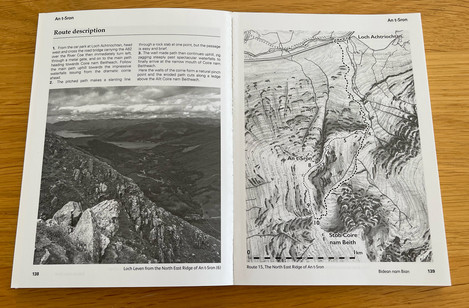
I had initially planned to use film as much as possible to keep with the classic 1950s feel, but as the project went on, I found a digital workflow much more straightforward, as it cut out the time loss of having to wait for the film to be processed and scanned. In this guidebook, the photographs were frequently needed to illustrate the accompanying text. To keep my pack weight down to reasonable levels and to help my ageing knees, I used an elderly Hasselblad film camera and/or an equally elderly Canon digital camera. Processing was kept to the bare minimum, just a conversion to black and white in the case of the digital images so as to let the landscape, not my interpretation of it dominate.
The maps and route illustrations were all drawn by hand over several months, again to keep with the classic old school guidebook theme and were a joy to produce. They give the publication an individuality as well as being vital in clarifying any route finding difficulties, plus they complement the black and white photographs very well. Each illustration was hand drawn whilst out on the hill, then the final rendering was done back at my studio. That way I could keep the dynamic of a sketch from life whilst also being able to produce the accuracy required to keep the topographical details correct.
That all sounds well and good in theory, but how would it work in practice? The next article will give some insight into the methods and challenges encountered during the eighteen months of work to produce our walking guide to Bidean nam Bian in Glen Coe.
Kickstarter Campaign
Walking in Glencoe Guide - Bidean nam Bian
In order to get the book started, we looked at raising enough money to print a pilot project which we could distribute in various outlets and assess the demand for the a longer print run. This first Kickstarter campaign will support the digital printing of 500 books and, if successful, will help us decide whether to extend the print run on a full litho printing press. There are a few different rewards available but the main reward will be an early copy of what we think will become a classic series of walking books.

